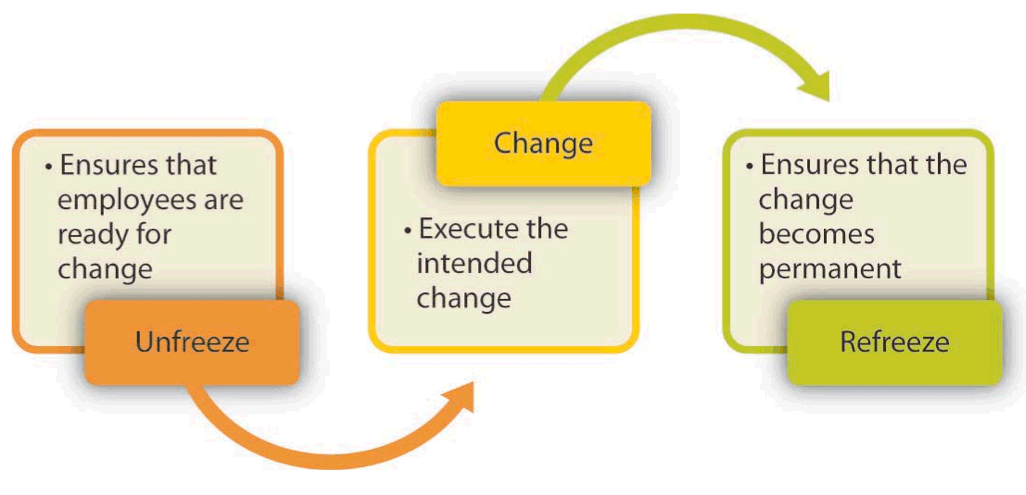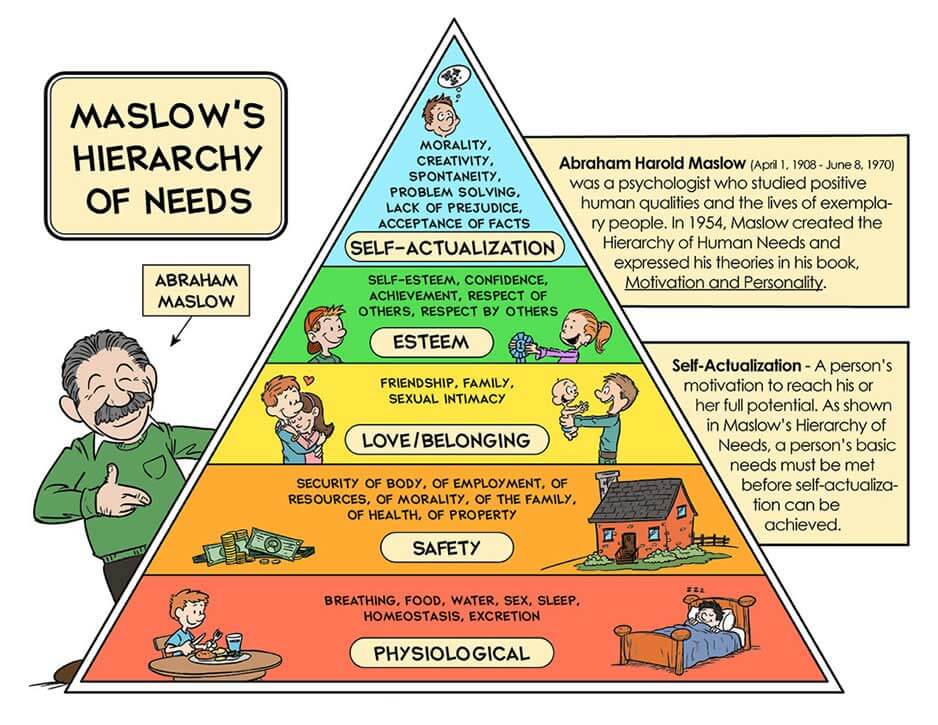Management models – This is a new way to look at your career. Have you ever thought if you can use strategic management models to improve your career? If you haven’t thought about it, don’t worry, we’re here to your aid. In this article, we will bring the top 5 management models which will help you see your career from different perspectives.
Management models are not only applicable to business or writing academic papers. Suppose you sincerely understand what the proponents of those models wanted to teach. In that case, you will be able to tweak a few parts here and there and will be able to design a beautiful, customized model for your career and professional growth.
Here’s the thing. We didn’t just pick any management models from any professors. We carefully picked these 5 so that you can see a significant similarity in your own career as well. First of all, we will talk about the model, how it is applicable to your career, and tweak some parts of the model (if needed) to make it appropriate.
After going through this article, you can choose one of the management models from this and start working. Or else, you can also pick something else from a huge list of management models and customize it according to your need.
Let’s get started. We will learn a lot about how you can improve your career by using management models. Now, there is no excuse.
#1. Kurt Lewin’s Change Management Model
Change is an important part of a career graph. If you want to improve your career, all you need to do is to understand this model by Kurt Lewin. To understand this model, you need to know 3 steps. But before going into the detailing of the change management model of Kurt Lewin, you need to identify one thing that you want to change in your career. This thing can be for your individual need or your team’s need.
Let’s say you want to change the level of productivity for the team or yourself in a given week. Here’s what you should do.
-
Unfreeze
In this stage, you need to communicate to yourself or to your team members why the old method of doing work is not improving productivity. Maybe it’s because there’s no feedback loop in the system. Creating awareness and communicating is the first step to starting the process of change. There would be resistance, but you need to ensure the team members understand why the change is necessary. If it’s for you, you must understand why the change would give you more benefits.
-
Change
Change is the toughest step to go through. Most people struggle here. If you do it yourself, you will struggle with the new system as it’s still not properly wired in your brain. The new behaviors and new methods of doing will take some time to adjust so that you can do it long enough to create better results. Once you or your team go through this stage, things start to become easier.
-
Freeze/Refreeze
Once you or your team is habituated to the new system to improve productivity, it’s time to set it as a norm. But how to do that? To use a reward system. If you do it right for a month and produce this much quantity, you will be given a certain amount of money or kind. If this can be implemented, your career and your team’s productivity will sky-rocket.
You can use this management model for any area of your career or life. All you need to do is understand and tweak the model according to your need. Isn’t this a great management model?
#2. Management Models- Maslow’s Hierarchy of Needs
Most of you have already heard about it. But you can see the image below to understand it if you don’t. Maslow said that we all start from the bottom, and once the need at the bottom gets fulfilled, we can gradually fulfill all our other needs.
- Physiological: You need to fulfill these basic needs before considering other needs. Air, water, food, shelter, sex, sleep, and warmth are the basic needs, as Maslow pointed out. They are also called your biological needs.
- Safety: Once you can fulfill your physical needs, you will think about your safety, maintaining law and order, ensuring security, and getting free from fear.
- Love & Belongingness: Later, you need to have family, friends and love, affection, and a place to feel included.
- Esteem: After physiological, safety, and love & belongingness needs, you can think about achievement, mastery, self-respect, and autonomy.
- Self-actualization: This is your top need: to achieve your full potential, extracting the best out of you and leaving a legacy that Steve Jobs called “making a dent in the universe.”
Addition
Now these are the needs of any human being, regardless of the country or place s/he belongs. But there is another need that is mostly ignored and also ignored by Maslow. Author Jonathan Fields says – There is the first basic need, even before the need to eat, quench thirst and find a shelter. And that basic need is the need not to change. It sounds strange, but if you look closely at us, you will understand that statement to be true.
Now how this management model is relevant to your career and business? Here are three key points –
- You would be able to prioritize your career according to these needs. Yes, self-actualization is important. But a hungry belly cannot create masterpieces (yes, sometimes, but mostly not).
- By following Maslow’s Hierarchy of Needs management model, you can create an excellent balance between your career and personal life which careerists now call work-life balance.
- You can constantly review where you are in your career by looking at Maslow’s hierarchy of needs management model and start from there.
#3. Five Disciplines
Peter Senge has developed a beautiful model called “Five Discipline” and is also the author of Fifth Discipline.
Before we discuss the five disciplines, here’s what you need to realize. Learning is an essential part of your growth, especially when discussing your career. If you take this model seriously and apply these disciplines in your life, they will help you grow multi-fold and catapult your team to a new height.
Let’s look at them one by one.
- Systems thinking: This should come last, but this discipline weaves the other four disciplines together so that you can practice them in a proper manner.
- Personal mastery: According to Senge, you should not view your work as a means of earning money and making a living. Rather he wants you to see your work as an artist would look at a piece of art, and you need to strive to make it better and more beautiful constantly.
- Mental models: We view the world as per our ingrained mental models. To improve our thinking, we need to improve our view of the world and a better understanding of old and new mental models.
- Building shared vision: An organization cannot go alone. To run an organization well and achieve success, we must depend on each other. It’s really all about interdependence. So, your vision should at least be shared by your team to make it effective and to be able to help each other in the pursuit of achieving success.
- Team learning: When team members close all their assumptions and engage in true dialogue, they learn faster.
If you use this model in any of your projects, all your projects will be successful. Don’t forget to use the fifth discipline, which cohorts all the other disciplines in implementable ways.
#4. Deming Cycle
This is a very useful management model to improve your productivity or anything you do in your career. This management model is simple to understand and easy to implement.
There are four parts to the Deming Cycle. Business Guru W. Edwards Deming is the proponent of this management model. This management model is also called PDCA Cycle.
- Plan: At this stage, you must plan for your implementation. It’s easy to articulate a plan before taking action.
- Do: Once you plan, you should implement your plan of action.
- Check: A control measure should be there so that you can understand how successful you’re in your effort to implement your plan of action. The best way to check your action is to have a set of standards structured beforehand.
- Act: Once you check and do course corrections, now you can improve the process, which Deming called “act”. After improving the process, you will go back to planning again.
You may wonder how this management model would help you in your career. Think about a project you want to complete within a time limit. To simplify matters, you have decided to chunk down your big projects into manageable sub-projects and set sub-deadlines for each. Hence, you can use PDCA Cycle in the case of your sub-projects. If you use this management model for your sub-projects, you don’t need to worry about the entire project and the quality of deliverables. Once you’re done with the project, you can use the same management model and check whether everything has happened according to plan. If not, you can improve the deliverable by following Deming Cycle again.
#5. Smart
The father of modern management Peter Drucker is proposing this incredible concept. He said that if you want to create great results, you need to measure them. He said – “There’s nothing as useless as doing something efficiently which should not be done at all.” And he also said – “What gets measured gets done.” Later organizations realized the value of his word and implemented the SMART method in all their goal-setting activities.
Look at what SMART is and how this management model can help you succeed in your career. This management model is simple but doesn’t go by its simplicity. It’s incredibly powerful and useful.
- Specific: The first part of this management model is specific about what you should do. It should not be vague or ambiguous. You need to be crystal clear about what you want to achieve for the organization or your career.
- Measurable: If your goal is not measurable, how would you know when you achieved it? You won’t. You will simply circle around all the places and realize your effort is wasted. So create a structure even for intangible goals, which will help you measure the outcome.
- Achievable: The thing you set for yourself should be doable. It should not be pie-in-the-sky stuff. You plan to build a castle in the cloud, and you say how can I do it? That’s not doable. Set yourself a target that you know you can achieve.
- Realistic: It should be realistic. If you want to earn a million dollars within a month if you’re just starting out, it’s beyond your wildest dreams and extremely unrealistic. Making a US $10,000 profit in a month (if you are a big firm and starting out) is a great goal. But it depends on the individual and the circumstances around the person.
- Timely: The goal should have a deadline. Suppose you’re writing a report, and there’s no deadline. Do you think you can finish it in the shortest possible time? We bet you won’t! Set a deadline after completing the first four steps, and you’re done.
You can use this management model in any area of your life and career. Simply take a sheet and write down the elements of this management model. However, write your goal at the top of the paper and make it specific, measurable, achievable, realistic, and timely. If you do this, you will be able to achieve any goal.
Moreover, use these management models, and you will see that you will be able to create a structure for your career success. Try one at a time and see what works for you.





